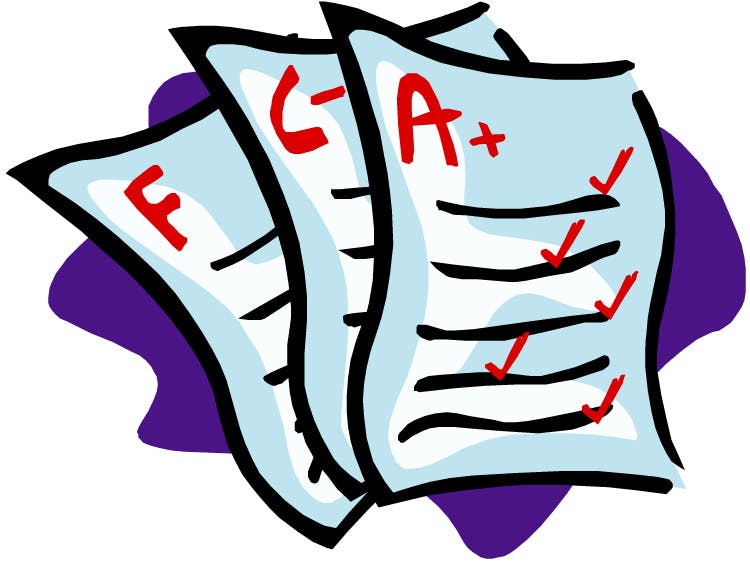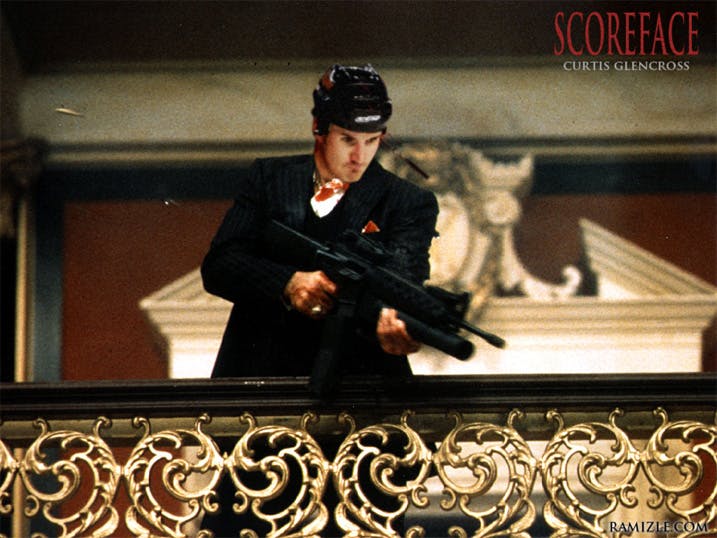Flames 2011-12 Player Grades: Top Six Forwards
By Kent Wilson
12 years ago
It’s time for that most contentious of sports writing activities: player grades/rankings! I’ve chosen to start things off with the Flames main forwards before we get into the support cast, back-end and goalies.
To grade the players, I used a mix of their results (both offensive output and underlying numbers) and my own subjective impressions from observation. I weighted thing by expectations and according to each guy’s place on the roster and pay grade. Meaning, a fourth liners aren’t going to be graded by the same criteria as first liners and vice versa.
So without further ado…the top sixers.
Report Card
Jarome Iginla
82GP, 32g-35a-67pts
Grade: C-
It was an undeniably rough season for the captain. Although he lead the Flames in scoring again this year, the rest of his game took a very serious step in the wrong. Iginla was forced to see some of the tougher ice time thanks to the team’s make-up and injury problems and frankly he got his head beat in most nights. His scoring chance ratio was an abysmal 46.3% and his possession rate was a team worst -11.53 corsi/60. It’s the first time Iginla has ventured into negative double digit territory by that measure as a veteran.
When He’s Good: Jarome is still capable of stretches where he dominates in the offensive zone, particularly when he finds ways to avoid coverage in the slot so he can unleash his still lethal shot. Iginla is also highly durable and so well conditioned he’s capable of playing 20+ minutes a night, which can’t be said for a lot of players in their mid-30’s. Only 11 forwards in the league played more than Iginla last season, with only four of them (Stamkos, Heatley, St. Louis, Tavares) skating more at even strength.
When He Struggles: Iginla is liability in both the defensive and neutral zone on most evenings, but especially when he isn’t right at the top of his game. He tends to be generally unengaged behind his own blueline and can give the puck away when trying to carry it through the neutral zone or in shallow areas of the opposition’s end. Iginla is particularly bad when he tries to overhandle the puck around the bluelines.
It’s an especially rough night when he is routinely pinched off along the boards during a rush, resulting in him stopping short, curling back and trying to make something out of nothing (which usually ends up in a give-away). The captain isn’t quite the bull along the boards that he used to be in his prime as well, so he tends to the surrender the puck during battle down low a lot more frequently these days.
Olli Jokinen
82GP, 23g-38a-61pts
Grade: B-
Everyone’s favorite photoshop subject, Olli Jokinen had a bit of renassaince this season, scoring 60+ points for the first time since 2008-09. He was on pace for almost 70-points for a majority of the year, but the percentages that were sustaining his output collapsed down the stretch.
Frequently lauded as the Flames most consistent forward, Jokinen saw the second toughest quality of competition on the team (only slightly behind partner Curtis Glencross) and started more often on the defensive end of the rink (47.9%). Those are really tough circumstances, typically reserved for Selke type players. Jokinen isn’t that, to be sure, which is why his scoring chance ratio was terrible (44.4%) as was his possession rate (-10.25 corsi/60). On the plus side, Olli lead the team in power play production rate (5.82 points/60) for the second straight season.
When He’s Good: I hate to use this terrible cliche, but Jokinen is best when he keeps things simple. A big guy who can really move once he gets going, Jokinen can slice through coverage in the middle of the ice and catch opponents off their guard with his speed. Short, simple passes to his wingers work best for him and he possesses an absolute howitzer of a shot which is how he scored so many goals for the Panthers back in the day.
When He Struggles: Jokinen is still a mediocre puck handler with average to below average vision on the ice. His feet move quicker than his hands, so when he tries to stickhandle through multiple opponents on the rush or when he attempts long passes through traffic, the puck tends to go the other way.
Olli is also only average at thinking the game as well, so sometimes he’ll struggle with his positioning or decision making on a play. He can also fall back into bad habits now and then with large, swooping, inefficient routes around the ice. He remains pretty poor in the face-off circle as well (46.5%).
Alex Tanguay
64GP, 13g-26a-49pts
Grade: B+
Limited to just 64 games due to injury, when healthy Tanguay was at times the best offensive player on the ice for Calgary. He remains a rare talent who manages to make everyone on his line better due to his ability to anticipate plays and find his line mates in heavy traffic. Tanguay doesn’t drive possession anymore, however, and he’s not overly physical.
Interestingly, Alex is the only guy over the last two seasons whose scoring chance differential is way out of line with his possession ratio. Both years he’s been in the red by the latter measure, but in the black in terms of chances for and against (chance ratio was 51.1% this season, well clear of everyone else who played consistently in the top-6). The correlation between possession and scoring chances tends to be about 0.7 or better, so either Tanguay is a unique anomaly or I have some sort of unconscious bias towards him while counting.
When He’s Good: No Flames player reads and reacts to the action as well as Tanguay when he is on his game. Alex has sublime on-ice vision, can stickhandle in a phone booth and thread passes through opposition sticks and legs. He also has one of the most accurate shots in the league, as his 18.8% career shooting percentage proves.
When Alex is in the zone, nobody on the team is more dangerous because he can make chances out of nothing, set-up team mates for easy goals or snipe it top corner himself.
When He Struggles: A quintessential pass-first winger, Tanguay sometimes tries too hard for the perfect play or easy tap-in, which leads to needless give-aways or lost scoring chances. When things aren’t going well for Alex, he starts to force low percentage plays in bad areas of the ice far too frequently, short-circuiting rushes or periods of sustained pressure. Tanguay also isn’t overly big or strong, so while he can win puck possession with skills and smarts, he can also be out-muscled during battles along the boards.
Curtis Glencross

image via ramizle
67gp, 26g-22a-48pts
Grade: B
After a career high 16.6% shooting rate the season before, Glencross signed a new deal in the summer and, improbably, managed a new career best SH% this season (23.6%). Not only is that a high water mark for Curtis himself, but it was the second highest SH% in the league amongst players who appeared in 30 or more games (Mathieu Perreault was first at 26.7%). So despite only playing in 67 games and managing only 110 shots on net, Glencross nevertheless scored 26 goals – in fact, he was the only player in the league to score 20+ goals on less than 120 shots.
As mentioned, Glencross played the toughest minutes on the team this season. He and Jokinen were almost always matched against the other team’s big guns (regardless of who was their other winger) which is the reason this year was the first time he had a negative possession and chance differential since becoming a Calgary Flame. As such, even strength was a struggle for Glencross when the puck wasn’t going in the net for him (think the last 3 weeks of the season) and the grade would have been a lot uglier if the bounces had gone the other way for Curtis this year.
When He’s Good: Fast and mean, Glencross can drive play along the boards and on the rush, which is why he and David Moss used to be dominate other third liners when they were playing in the middle of the rotation. Glencross also has a hard, accurate shot, so he can bury quality chances when they appear. His speed and tenacity means he can play on both the penalty kill and power play as well.
When He Struggles: Glencross can get in toruble in a number of ways. First, if he’s angry or frustrated, he tends to get overly aggressive and takes ill-advised penalties at inopportune times. Secondly, Curtis also suffers through periods of needlessly fancy or maddeningly lackadaisical play that tends to neutralize his core strengths as a player. Although speedy, strong on his skates and possessing decent instincts, Glencross certainly isn’t Mario Lemieux. Meaning…it becomes a problem when tries to play like number 66.
Mike Cammalleri
66Ggp, 20g-21a-41pts
Grade: B–
It was a rough start of the season for Cammalleri as a Hab, eventually leading to a fall from grace in Montreal and a trade back to the Flames in exchange for Rene Bourque. The deal worked out for Calgary, with Cammalleri stepping into the Flames top-6 as both a winger and center (depending on need) and garnering 11 goals and 19 points in 28 games.
Cammalleri struggled to find his feet when he first arrived, disappearing into the mix completely aside from a couple of power play goals. As things rolled on, however, he appeared to get more comfortable and driving offense a lot more consistently down the stretch. He wasn’t too bad as a pivot when half the club’s regular centers were injured, to the degree that I’d have no problem with the team penciling Cammalleri in as a center if the club can’t find a useful guy in free agency.
All that said, like everyone else in the top-6, Cammalleri spent more time in the defensive zone and was outchanced at 5on5. HIs specialty has always been creating chances and finishing around the net rather than a solid 200 foot game, but with a $6M cap hit, the expectations are a bit weightier.
When He’s Good: Cammalleri is a slick, crafty player in the offensive zone. He has a nose for loose pucks and soft coverage in the slot which is where he does a lot of damage. Cammalleri has a wicked shot and a fast release, so he’s dangerous as both a triggerman on the PP or as a guy causing havoc down around the crease. He’s a decent puck handler and can make slow or clumsy defenders miss with both their stick and body checks.
When He Struggles: Not the best defensive presence, Cammalleri will cheat for offense when he can and make high-risk plays at times which can back fire. Although he is solid on his skates for a smaller player, Cammalleri can definitely be overwhelmed by bigger opponents in certain situations. And although agile, Cammalleri doesn’t have the high-end speed one usually expects in smaller forwards.
Coming Up…
These are the only guys on the team who were consistently top-6 type forwards (even there’s only 5 of them). The next round will look at everyone from Backlund to Bouma.
Recent articles from Kent Wilson






